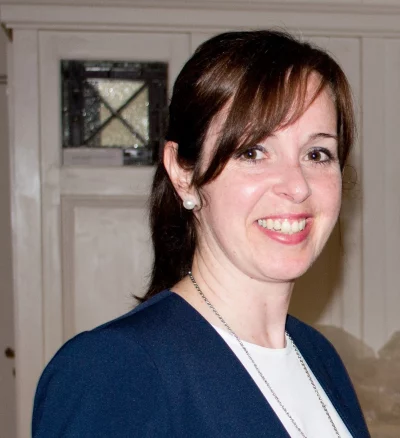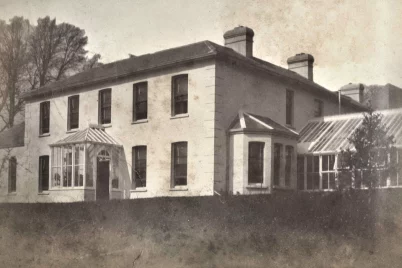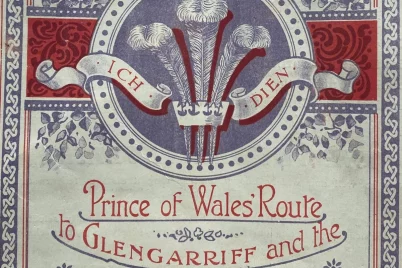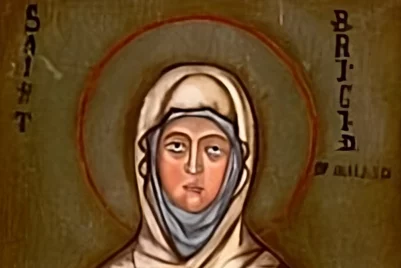Did Ye Know/ You Know?
Gougane Barra – Glacial Valley & Ecclesiastical Site
history – trails – faith – heritage
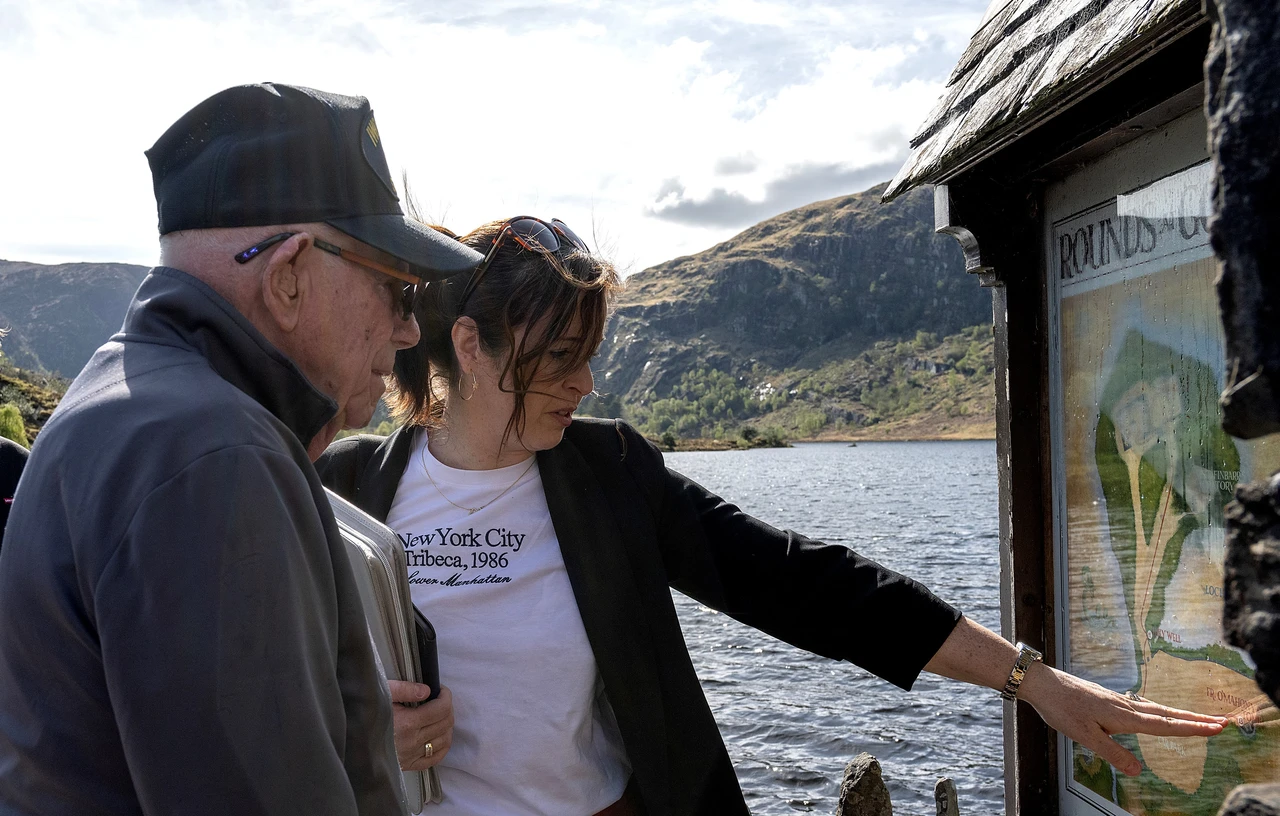
This past May bank-holiday I had the privilege of escorting World War 2 Iwo Jima Veteran- Don Graves and his team around Gougane Barra. Don served in one of the worst conflicts of the second world war. The Iwo Jima- pacific conflict saw hundreds in his platoon land on the island and very few left alive. At 98 years of age, Don is surely the spriteliest 98-year-old I have ever met or can hope to meet. Longing to visit Ireland, the land of his ancestors, his wishes came through. As a crooner he wished to sing and to have someone sing Danny Boy to him in Ireland on his birthday. As a result of fundraising efforts in USA, the dream became a reality. His visit made headlines in Ireland and back in Texas. Don and his team first heard mention of Gougane Barra, its heritage and glacial beauty while sitting in a hotel bar in Dublin. I got a request to give him a tour around Gougane Barra and to explain the history and significance of the site.
Don was attracted to Gougane Barra because of the solitude and the contemplative surroundings he had heard about, but also Don had rediscovered his faith after he had survived the Iwo Jima conflict. From his military experience was born Don Graves – The Pastor – a role he maintained well into his eighties.
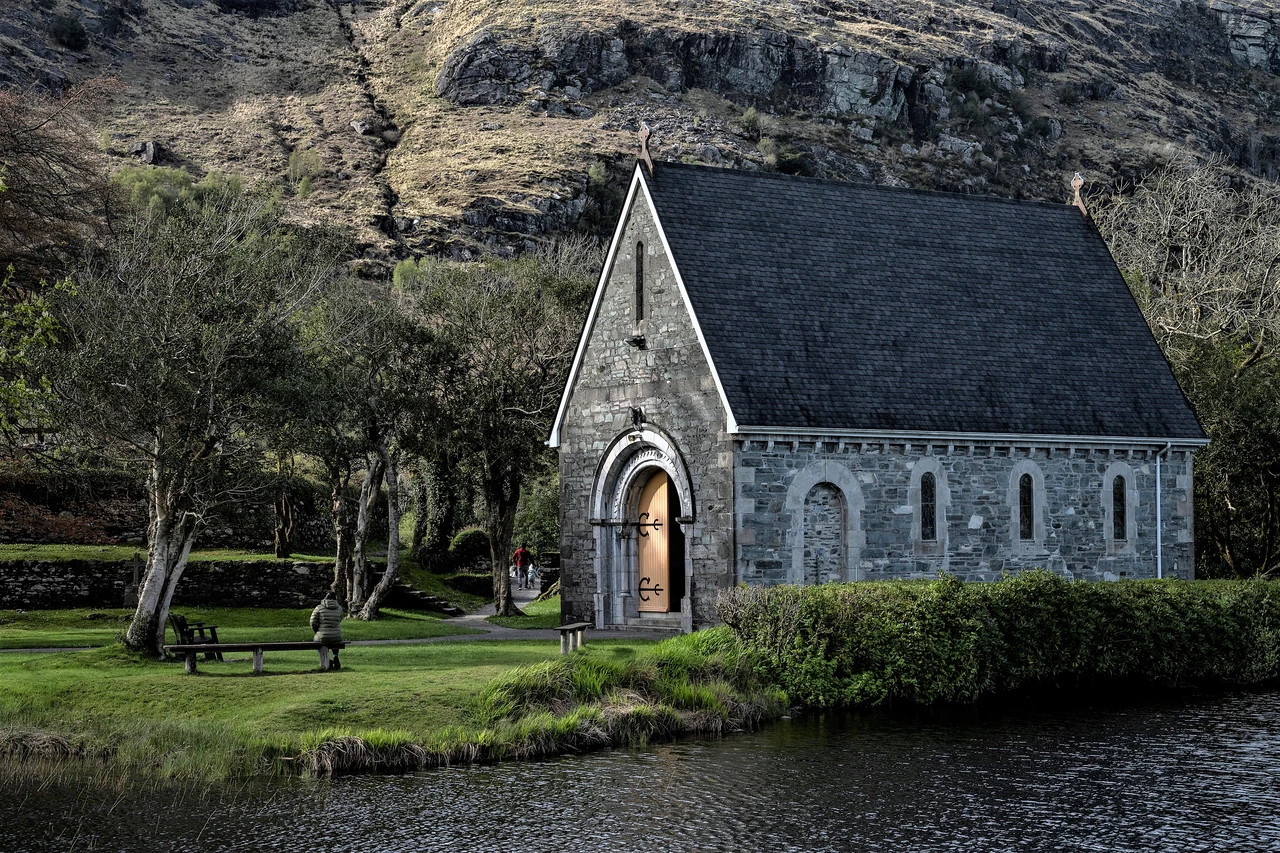
The visit to Gougane Barra was one of his highlights. As he said to me “it’s a matter of faith, it’s Christian history”. Don had neither heard of St. Finbarr nor of Irish monasticism and was eager to learn more. Inspired by the surroundings he visited the oratory, lit a candle, contemplated the stained-glass windows, sat quietly in the oratory, walked to the healing stream, studied the stations of the cross and reflected on his own life of almost 100 years. An early life spent in service for his country and for over 50 years in service of his faith. At the end of his trip to Gougane Barra he sang Danny Boy on the jetty! Something I will always treasure. As a historian and West Cork native, Gougane Barra is synonymous with St. Finbarr, weddings, picnics, walking trails, pilgrimage and contemplative prayer and the Feast Day in September. So, let’s explore who was St. Finbarr and what is Gougane Barra?
First and foremost is the natural beauty of the area, serenely beautiful with panoramic views of the mountains nestled against the shoreline of the lake with a tiny island connected by a magical causeway. The river Lee rises at Gougane Barra. Beautiful on sunny days but as a photographer friend said (something along these lines) – “it would be better on a bad day, with the clouds down on the mountains and the skyscapes creating wonderful shots with the light playing a part”. So, Gougane Barra can be many things to many people. Have you been there? If not – arrange a visit, pack the picnic bag and slowly explore the site — look for the following:
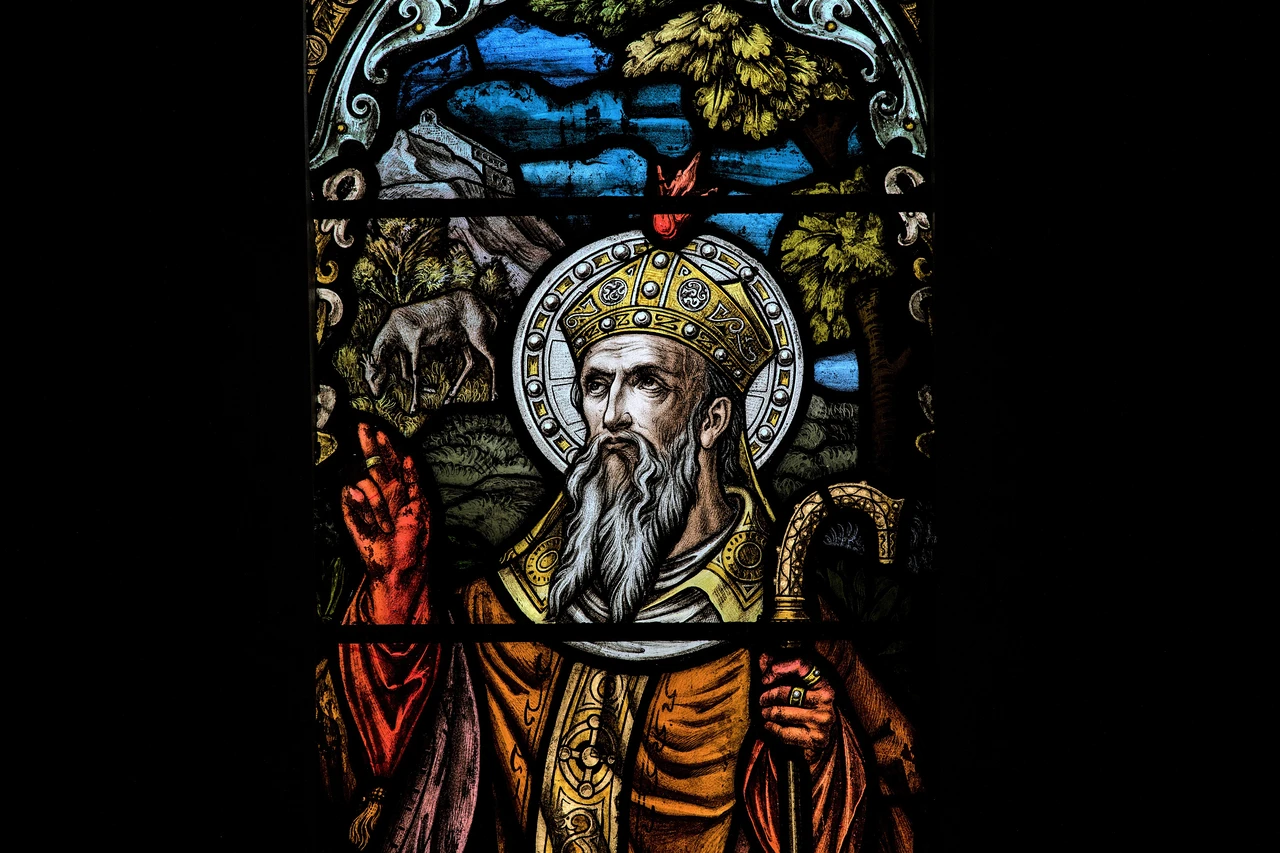
St. Finbarr – According to Cardinal Timothy Manning Archbishop of Los Angeles (on gouganebarra.com) “this hallowed shrine of St. Finbarr dates back to the 6th century where he communed with God. The surrounding mountains were his cloister, and the lake was for him the mirror of God’s grandeur, stone cells commemorate his hermitage”. Who was St. Finbarr? Born in the later part of the 6th century, about 150 years after St. Patrick came to Ireland in 432AD, he was the son of a lady of the Irish Royal Court and an artisan. Originally named Lochan but later received the name Fionbarr (Finbarr meaning Whitehead) from his teachers in Kilkenny. According to The Lives of the Saints, it is believed he visited St. David in Pembrokeshire in Wales and accompanied him to Rome. Pope St. Gregory is reputed to have wanted to make Finbarr a bishop, but the Pope had a vision – after which he decided that only God could make Finbarr a bishop. Returning from Rome, Finbarr continued to preach around the Munster area and founded several churches. According to local folklore I heard, he is reputed to have visited various local sites, rocks and holy wells. He settled on the small island of Gougane Barra where he lived the life of a hermit in prayer and solitude. Sometime later he founded a monastery on marshland at the mouth of the river Lee known as Corcaghmer from which Cork is derived. Many scholars and religious candidates arrived at St. Finbarr’s school and Finbarr’s influence began to spread. He is considered the first bishop and founder of Cork and died around 623-633 AD. The motto of University College Cork is “where Finbarr taught let Munster learn”.
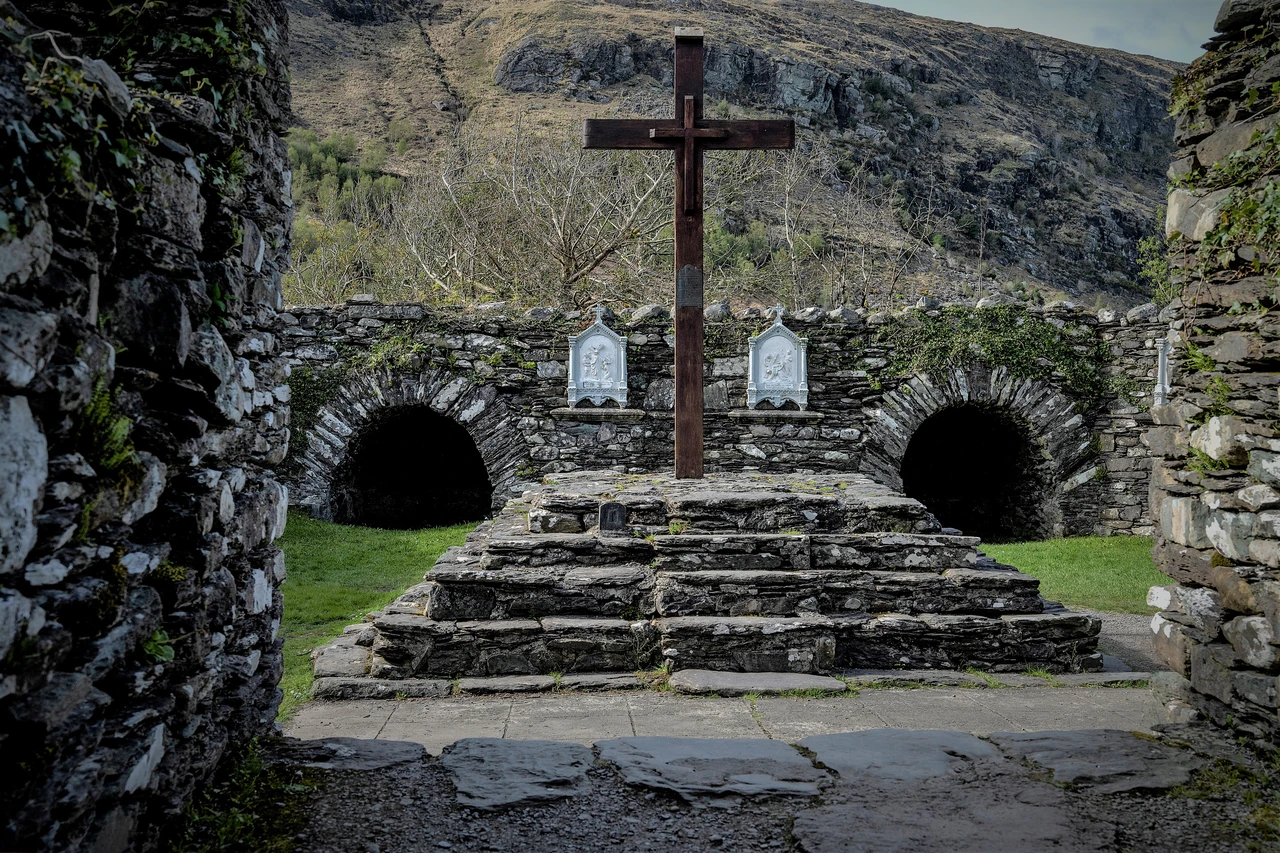
The Oratory situated on the island is immersed in beautiful mountain scenery and on the lake. The oratory epitomises the solitude and serenity of the original oratory and hermitage. Patrick Comerford’s website is a great source of information regarding the building of the present church. Built in 1901, the brainchild of Fr. Patrick Hurley who successfully acquired funding from Irish Americans, he specified that the oratory should be built in a mix of Hiberno-Romanesque and Byzantine styles, with details based on 12th century Irish churches such as Cormac’s Chapel on the Rock of Cashel. It was officially opened on the Feast of the Assumption, 15 August 1901. A special mass – Gougane Sunday, is celebrated around the Feast Day of St. Finbarr, 25th September. “The architect was Samuel F Hynes of Cork, and the interior decoration was designed by Michael Buckley of Youghal, Co Cork, and Bruges, Belgium… an elegant barrel-vaulted, a freestanding altar, important stained-glass windows, intricate stone carvings, and only four rows of small pews”. Intricate stained-glass windows depict various Irish Saints, many synonymous with the area, St. Fachtna, St. Gobnait, St. Ita, St. Brendan and St. Finbarr. A beautiful oratory that provides an inspiring backdrop for weddings and other religious events. The older ecclesiastical ruins and the “prayer rounds”, the practise of etching a pilgrim’s mark on a stone is still evident there. These ruins really create a sense of monastic life.
Healing Stream – many places in Ireland have holy wells and most recently a book has been published on the Holy Wells of County Cork. The stream at Gougane Barra is reputed to have healing properties, as do many other wells and streams around Ireland. I can’t testify as to its efficacy, but I can say the records of west Cork show there are many such streams in the vicinity of early monastic and medieval ecclesiastical sites. I know of a St. Finbarr’s Well, adjacent to a medieval church and graveyard in the area.
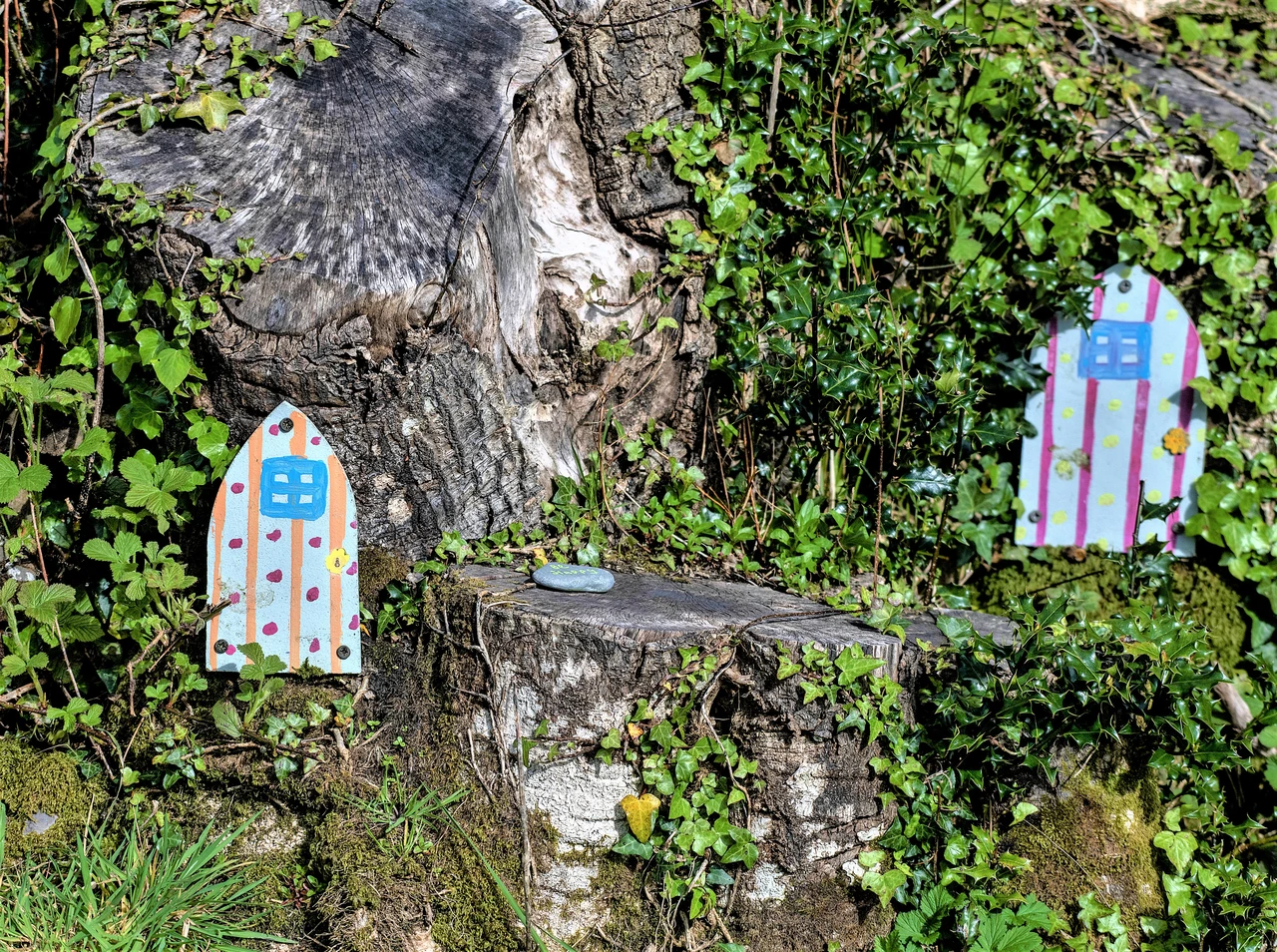 Little Fairy Doors – doors to the “little people’s” world. In recent years fairy doors have started to pop up at various locations including near the Healing Stream in Gougane Barra. Upon reflection, they are cleverly positioned at Gougane, in a monastic medieval setting, especially if you wish to bring the mysticism of Irish legend and folklore to life for young children on a walking trip or picnic. Myths are also central to our folklore, heritage and customs throughout Ireland. Many of us are familiar with piseogs (in Irish meaning superstitious belief or practice) which our grandparents’ generations would tell us, about the little people, strange music in the night, ring forts and of course the fairies.
Little Fairy Doors – doors to the “little people’s” world. In recent years fairy doors have started to pop up at various locations including near the Healing Stream in Gougane Barra. Upon reflection, they are cleverly positioned at Gougane, in a monastic medieval setting, especially if you wish to bring the mysticism of Irish legend and folklore to life for young children on a walking trip or picnic. Myths are also central to our folklore, heritage and customs throughout Ireland. Many of us are familiar with piseogs (in Irish meaning superstitious belief or practice) which our grandparents’ generations would tell us, about the little people, strange music in the night, ring forts and of course the fairies.
Walking Trails – Heading up from Cronin’s Pub & Café and the Gougane Barra Hotel extends many kilometres of walking trails with what is one of Ireland’s only thatched public toilets, a sympathetically designed convenience nestled
unobtrusively in natural surroundings. Gougane Barra was one of Ireland’s first national parks and opened to the public in 1966. For walkers, nature lovers – Gougane Barra is the rural idyll.
And when you have explored – it’s time to finish at Cronin’s Bar & The Gougane Barra Hotel and if you’re lucky enough and rain had passed – relax at the picnic table and watch a sunset! The Perfect Place!
Additional Information
- Gougane Barra | Gougane Barra County Cork
- Patrick Comerford – The island oratory at Gougane Barra
- Gougane Barra Forest Park – Coillte
- Gougane Barra National Park – Discovering Cork
- St. Finbarre – Myth and Legend | Cork Heritage
Photos in this article are courtesy of Jeremy Lock, photographer
